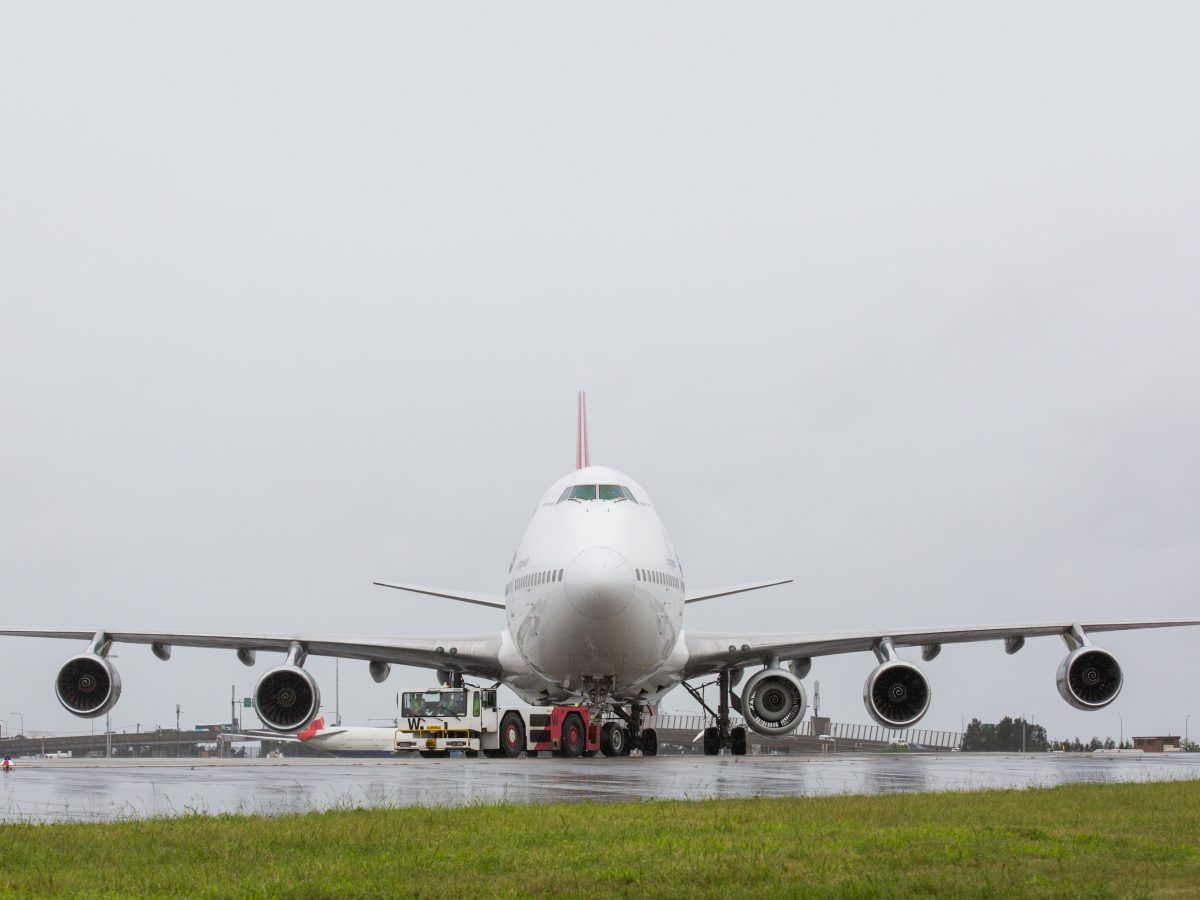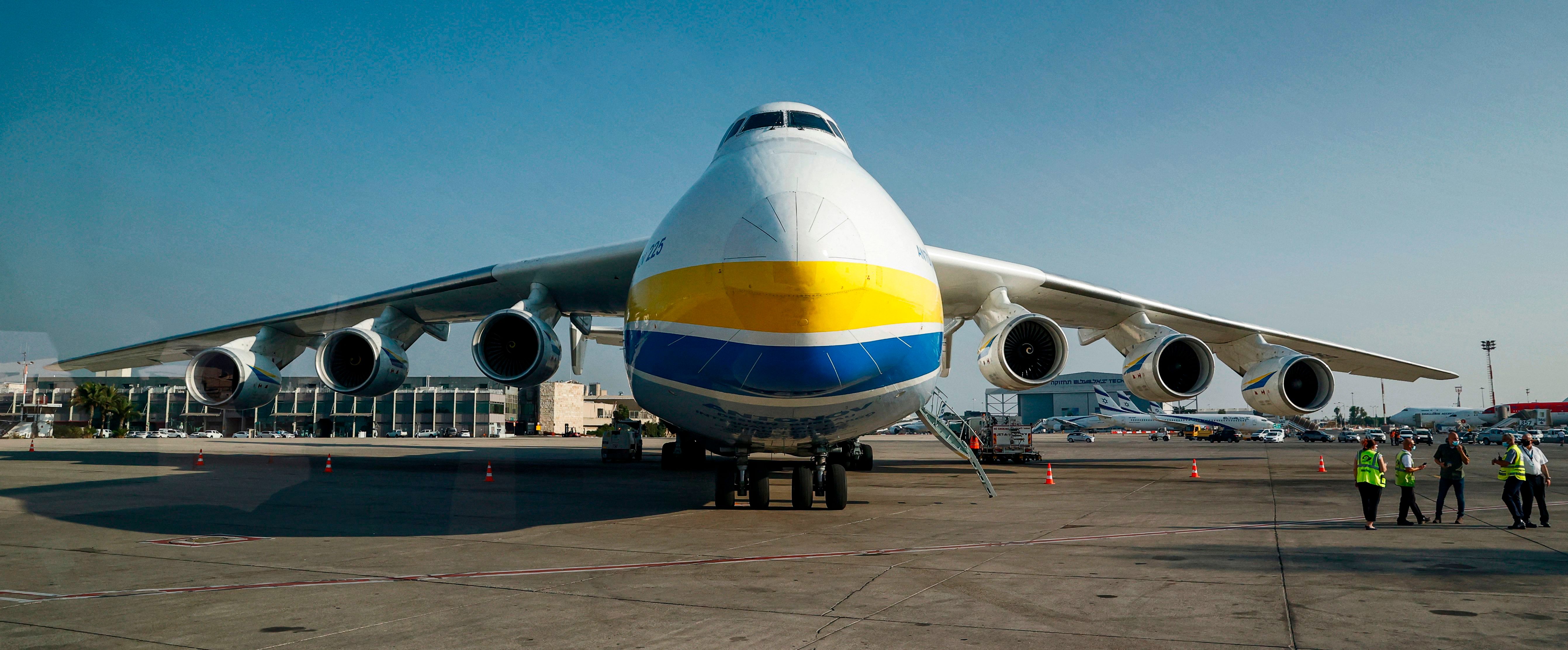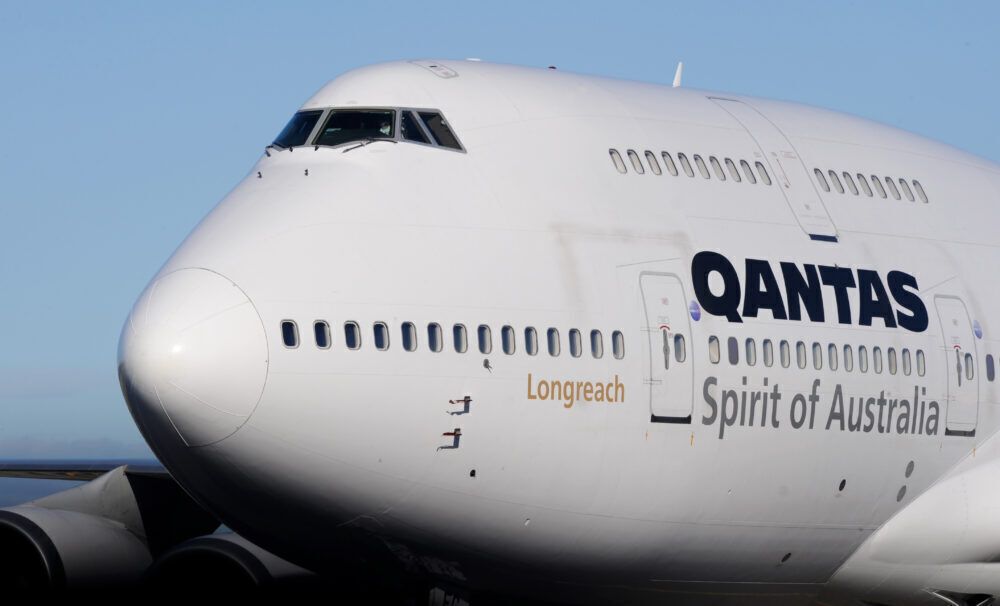In 2016, Qantas needed to get a new replacement engine to Johannesburg, South Africa, at short notice. While aircraft parts are often transported on cargo planes, the Australian flag carrier took a different approach. In this case, the quickest way to get the engine there was to catch a lift on the wing of a Boeing 747. But how did it affect the aircraft in flight?
An additional engine
The featured image depicts a rather unusually-configured Boeing 747. As we can see, this aircraft has an unbalanced engine layout, with two on one side and three on another. Of course, in times of extensive research and development into new engine technology, aircraft having strange engine configurations is not a new phenomenon.
Indeed, both Airbus and Boeing are known to add on a different engine to testbed aircraft. Boeing, for example, tested the new GE9X on a 747 before installing it onto its new 777X. However, it is even rarer to see an extra engine on an aircraft, and an odd number at that.
While the Ukrainian Antonov An-225 'Mriya' had more than four engines (six), it didn't perform as a commercial passenger aircraft. So why did Qantas operate a commercial Boeing 747 flight with five engines, and how did the airline manage it?
Stay informed: Sign up for our daily and weekly aviation news digests.
Why did Qantas fly the fifth engine out?
According to Qantas, a broken Rolls-Royce engine had stranded one of its Boeing 747s in Johannesburg, South Africa. The Australian flag carrier had plenty of spare parts back in Sydney, and thus didn't need to go to the trouble of sourcing locally. However, to have shipped a spare engine over to South Africa would have cost time and, subsequently, more money.
After all, having a 747 stuck on the ground abroad, not earning revenue, is a costly proposition. As such, Qantas could not afford to wait. However, the spare powerplant was too big to fit in the cargo hold of a typical aircraft. While the Antonov An-225 would have had space, there is only one in the world, making it expensive to hire.
Sending spare parts by sea would also have been extremely time-consuming. Indeed, this was a catalyst for Boeing's decision to construct the 747LCF 'Dreamlifter.' This reduced shipping times from Japan to the US from a month to nine hours. Fortunately, Qantas found a third option. It would simply attach the spare engine to the wing of an existing 747.
Can a Boeing 747 fly with five engines?
Thanks to the design of the Boeing 747, there are anchor points under the wing to attach various objects. One of these can be a spare engine. This engine is not connected to the aircraft's systems. As such, it cannot be used to provide additional power to the aircraft.
Qantas stated ahead of the flight:
"The extra engine isn’t powered up for the flight – we’re essentially ferrying across a very large spare part from our engineering HQ in Sydney so it can be fitted to one of our other Boeing 747s in Johannesburg."
However, its presence does impact how the plane flies. The extra engine has the following effects on the aircraft.
- The aircraft becomes unbalanced. As such, pilots have to compensate for the skewed weight distribution.
- The extra engine adds drag to one side of the plane. Consequently, pilots have to adjust the power on the other side to compensate.
- The special cargo meant that the aircraft was heavier and required additional stops. This particular trip between Sydney and Johannesburg involved a fuel stop in Perth.
Once the aircraft landed in Johannesburg, the fifth engine was detached and installed on the grounded Boeing 747. Both jets were then able to fly back home to Australia. As for the broken engine, it was shipped back the slow way to Sydney, by sea.
From its pioneering days to its latter years, the 747 has long been trusted with its versatility. Even in its afterlife, it's been often deployed as a testbed, furthering opportunities in aviation for years to come.
What are your thoughts about the five-engine Boeing 747? Let us know what you think in the comment section.



